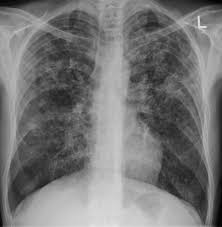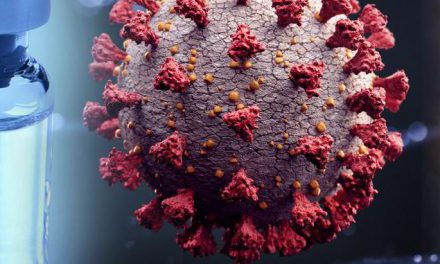
Approximately 15 vaccine candidates are undergoing development in the fight against tuberculosis, aiming to address the limited effectiveness of the Bacillus Calmette-Guérin (BCG) vaccine. Among these candidates, three are currently in the advanced phase 3 trials. Among the most promising options, one has demonstrated a remarkable 50% efficacy in adolescents and young adults—an especially significant outcome for a population less effectively safeguarded by the BCG vaccine.
“The development of vaccines against tuberculosis is presently one of the most formidable challenges in tuberculosis research,” stated Olivier Neyrolles, PhD, Director of the Institute of Pharmacology and Structural Biology at the French National Center for Scientific Research, University of Toulouse. He made this statement during a press conference organized by France’s national AIDS and viral hepatitis research body (ANRS)/emerging infectious diseases. The primary objective of these vaccines is to eliminate the disease in alignment with the World Health Organization’s (WHO) strategy.
While the BCG vaccine provides strong protection against childhood forms of tuberculosis, particularly the disseminated and meningeal variants—which are often fatal—it has become evident over time that it is not adequately effective against the more common adult pulmonary forms of the disease, Neyrolles informed the Medscape French Edition.
The candidates being investigated employ attenuated tuberculosis bacilli (akin to the BCG), viral vectors, or subunits of bacterial antigens. Neyrolles explained, “With subunit vaccines, the idea is to continue using the BCG and administer the new vaccine later during childhood or adolescence” to reinforce and extend protection.
Tuberculosis, caused by Mycobacterium tuberculosis (Koch’s bacillus), is a contagious ailment affecting an estimated one-quarter of the global population. The bacillus can lie dormant for many years (referred to as latent tuberculosis infection) and become active under specific circumstances (such as immunosuppression, malnutrition, or precarious living conditions).
Presently, the BCG vaccine is the only one available for tuberculosis. Although it significantly reduces the severity of the illness in young adults (offering nearly 90% effectiveness against tuberculous meningitis), its limitations in protecting adults mean it does not impede the transmission of the disease or contain the global epidemic.
Tuberculosis, once the leading infectious disease in terms of mortality, has now been surpassed by COVID-19 and stands as the second most common cause of death from infection. According to the WHO, 10 million individuals, including 10% children, develop an active form of tuberculosis each year, leading to 1.5 million fatalities. Over 95% of cases occur in developing nations.
“Tuberculosis remains a disease primarily affecting the less privileged. There is a strong correlation between TB rates and gross domestic product. Malnutrition prevalence is also linked,” remarked Nicolas Veziris, MD, PhD, head of bacteriology at various hospitals in Paris.
Tuberculosis continues to be a public health concern in developed countries, particularly with the rise of challenging-to-treat multidrug-resistant (MDR) forms. In the European Union, nearly 30,000 cases are reported annually. In France, 4500 individuals contract tuberculosis each year, primarily in Île-de-France and France’s overseas territories Guyana and Mayotte.
In 2015, all WHO member states, along with the United Nations, endorsed WHO’s sustainable development strategy to combat tuberculosis. To achieve this, WHO aims to reduce tuberculosis-related deaths by 90% and lower the incidence rate by 80% by 2030. Accelerating Vaccine Development
The development of new vaccines is undoubtedly one of the key focal points. Earlier this year, the WHO introduced the tuberculosis vaccine accelerator council to “facilitate the development, testing, authorization, and use of new tuberculosis vaccines.”
According to a WHO study, a vaccine exhibiting 50% efficacy in preventing tuberculosis in adolescents and adults could prevent up to 76 million new cases and save 8.5 million lives over a 25-year period. This would result in the avoidance of 42 million courses of antibiotics and a savings of over 6 billion euros ($6.37 billion US).
“Research on tuberculosis vaccines is complex because, on one hand, the bacteria contain thousands of antigens, making it challenging to identify which ones are beneficial. Additionally, we still lack a comprehensive understanding of the immune responses that safeguard against tuberculosis,” Neyrolles pointed out.
The cellular response has proven to be pivotal in providing protection. Nonetheless, efforts to develop vaccines that stimulate a specific lymphocyte response have encountered setbacks, leading researchers to reevaluate their vaccine strategies. “For a long time, we have oversimplified immunity to tuberculosis,” Neyrolles stated.
Candidates in Progress
Approximately 15 vaccine candidates are in various stages of development, with 10 having progressed to clinical trials. The most promising among them is GSK’s M72/AS01E subunit vaccine. In a phase 2b study, it reduced the risk of developing an active form of the disease in adults by 50%. All participants had received the BCG vaccine at birth.
In June, the Bill and Melinda Gates Foundation and Wellcome announced funding of up to $550 million for a phase 3 trial of this vaccine. The trial is anticipated to involve 26,000 volunteers, including HIV patients without tuberculosis in Africa and Southeast Asia.
Two other vaccines utilizing attenuated bacilli are presently in phase 3 trials. One, developed by German researchers using the BCG vaccine as a foundation (VPM1002), has undergone testing in several African countries on infants to prevent infection and on adolescents and adults to impede the development or resurgence of the disease after treatment.
Another “highly promising” vaccine currently in phase 3 trials uses an M tuberculosis strain attenuated through two genetic mutations. Originating from France’s Pasteur Institute and further developed by Spanish researchers, this vaccine, named MTBVAC, is being assessed in several African countries as a preventative measure against tuberculosis infection in infants.
These trials are conducted over extended durations. Results for the attenuated vaccine based on M tuberculosis are not anticipated until 2028. It will likely be an even longer wait for outcomes from the trial assessing the BCG subunit booster vaccine. Neyrolles emphasized, “There is cause for hope, but patience is key.”
Prospective Cohort Study
A prospective observational study, designed to “gain better insights into the risk factors for treatment failure and relapse” in tuberculosis patients undergoing treatment, is set to commence in France, according to Claire Andrejak, MD, PhD, a pneumologist at Amiens-Picardie University Hospital in France. The study will encompass 2000 tuberculosis patients monitored over a period of 2 years.
In France, available follow-up data (pertaining to 65% of treated patients) indicate that “the disease course after one year is considered unfavorable in 25% of cases,” due to ongoing tuberculosis treatment, treatment failure, disease recurrence, or mortality, as per Andrejak.
The team aspires to uncover the mechanisms that may account for the exacerbation of the disease and the response to treatment. Andrejak further explained, “The goal is also to discover clues on how to tailor treatment more effectively.” Additionally, a culture collection of causative bacteria will be established “to search for bacterial markers associated with disease development.”











